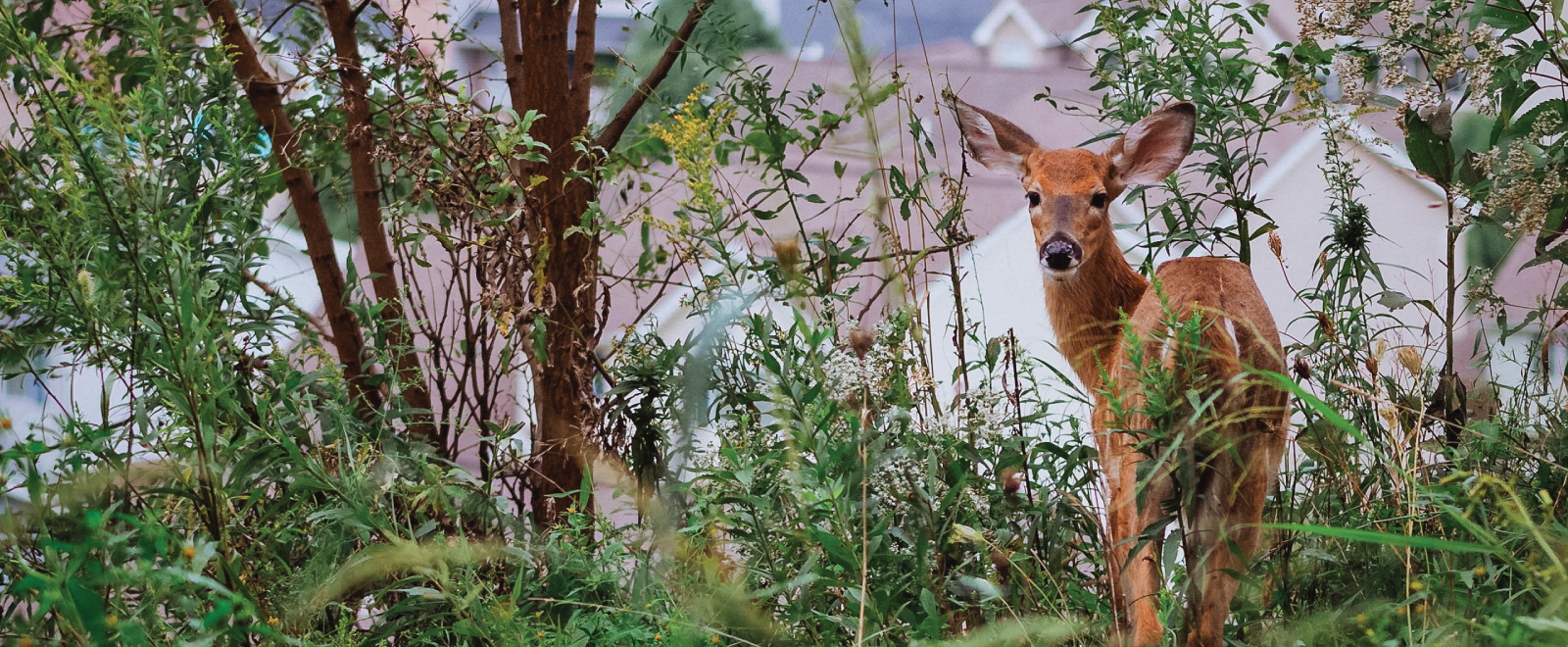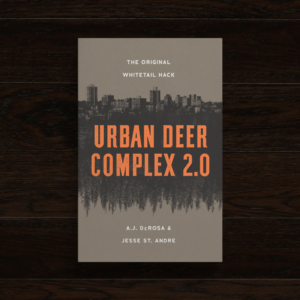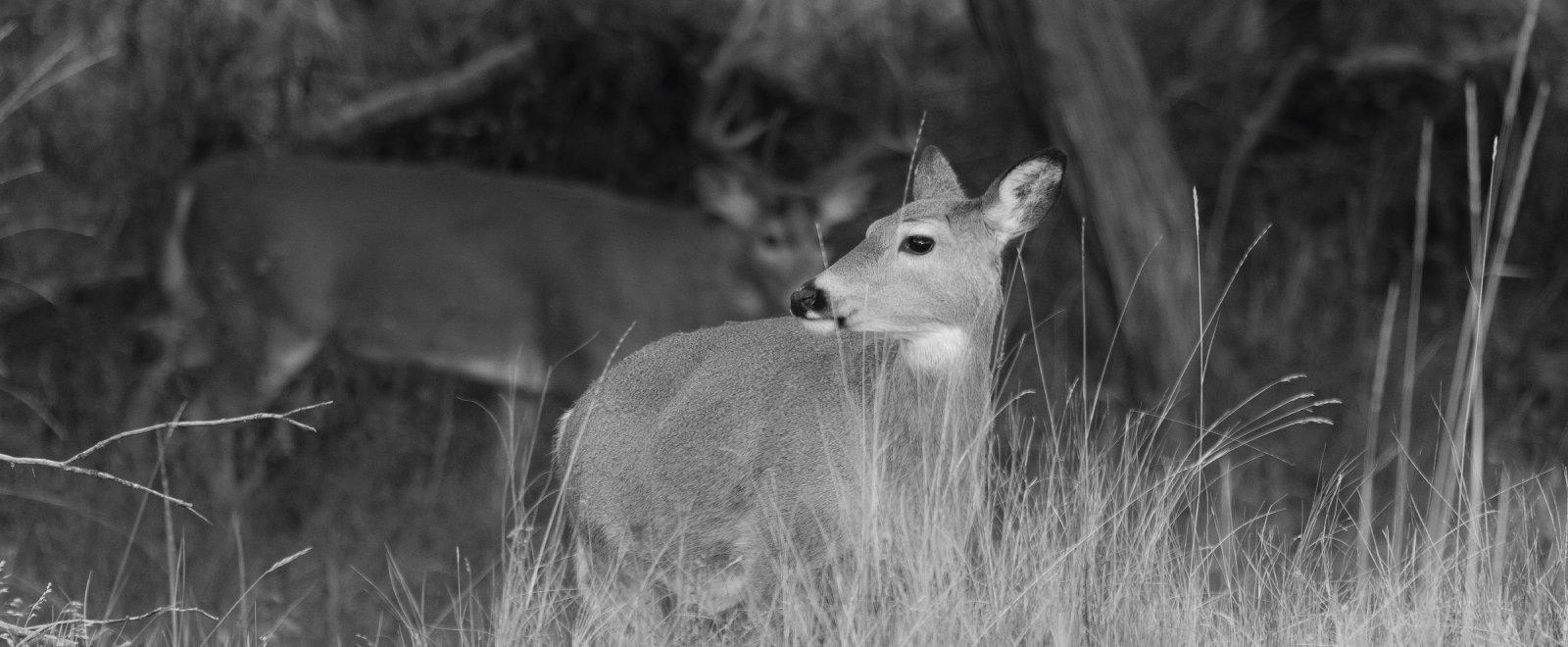Home » News » Understanding Fear Development in Whitetails – Transgenerational Stress Inheritance
Understanding Fear Development in Whitetails – Transgenerational Stress Inheritance

A.J. DeRosa founded Project Upland in 2014 as an excuse…
Theories of Rapid Evolution of Whitetail Deer Behavior Supported in Scientific Study.
Over the years I’ve had plenty of healthy debates over what I call the Science of Fear. I first wrote about it in the original Urban Deer Complex which was published back in 2014. (Although now out of print, you can pick up Urban Deer Complex 2.0 which was co-authored by friend and veteran deer hunter, Jesse St Andre). To give a surface level recap, the concept is built around how deer survive and evolve in human-influenced settings, and how specific behavior is passed on from generation to generation. Although I theorized on the concepts of nature versus nurture, I wrote that I believed young deer were born with inherently new behavioral traits that their older relatives may not have exhibited. Essentially, as I now discovered the scientific term for it while listening to a podcast about HBO’s Watchmen, transgenerational stress inheritance is a real and scientifically confirmed thing.
Without going too deeply into a human subject that I am very unqualified to speak on, I will point out that this was first confirmed in the study of animals and published back around 2013. It was proven that anxieties presented in mice would be passed down at least two generations without the offspring being exposed to the original scenario/stressor.
To simplify the method of the study, a specific scent (related to cherries and almonds) was used to entice the male mice in a breeding pair. They would then be delivered an electric shock to associate the smell with the anxiety. The mice were then bred with females who had not been exposed to the same stimulus and the resulting offspring had an inherent anxiety based around the scent without ever being exposed to the shock.
Not that I’m thrilled to write about some mice getting lit up in a lab for our well-being, but this study provides concrete evidence pointing towards behavioral evolution in animals. Add in some rapid exposure of urban and suburban environments and you have a constantly evolving animal.
These behaviors have been evident in even more rural areas. Years of culture dictating things like “the farther you go into the woods the better” and deer begin to evolve closer to human structure and become more elusive by adapting to hunting tradition (i.e., behavior) over the course of time.
This past week while out hunting for woodcock (which also display transgenerational stress inheritance by walking away from points) with my bird dog, a wirehaired pointing griffon, I had observed a few deer hunters trekking their way deep into the woods and fields in a local property–textbook classic hunting methodology that assumes that deer are far away from the roads and structures.
No sooner had we made it into the wood line and my dog went on point. An American woodcock whistled his wings into the air and two shots rang out from my side-by-side to bring him down. Not 30 yards away a buck stood up in the thicket and my conservative guess would put him at 150 inches plus. He looked in puzzlement–not moving for a good five minutes–at me, the dog, and the interaction in front of him. He then turned and walked away at a brisk pace along the road and up towards a house, never running. He knew the limits of the interaction, he understood the lack of threat we presented, and as if years of evolution had taught him that deeper into the trees meant danger, taking his time along the more developed route was his safe bet.
One of the first ideas I had back in the early 2000s was to hunt deer on walking trails used heavily by casual walkers, bikers and runners. I would dress in plain clothes, wear cologne, talk to myself as if I were in conversation with a friend or on the phone (Read: What is Urban Camouflage?). These were the very trails along which I’d heard non-hunters say they saw deer all the time. Hunting friends would go there and see nothing. It seemed simple, but the idea of evolutionary behavior in suburban whitetails is rather complex and constantly changing. Sure, it worked and many deer would fall victim to this simple trick. But I learned such ideas as the theory of fluid motion, and concepts of flight response. In retrospect, all fit the idea of transgenerational stress inheritance. While other deer bow hunters would stop to make a shot on a deer, I would keep walking, bow drawn back. And if a shot was not presented I would keep walking, never breaking up the fluid motion, passing up and down the trail till I could take a clear shot.
The most important thing to remember–and the fundamental basis of the Urban Deer Complex–is that all of this is ever-changing. Deer will become wise to tricks such as these as they survive those interactions and more people try them. It’s why it is so important we do not fall into the trap of “tradition” in deer hunting. We must continue to evolve our tactics and adapt to rapidly changing deer behavior.
In one of the chapters called “Hunting the Hunter,” it’s a basic theory that doing the opposite of all the other hunters often leads a hunter to deer. Sure, that’s a serious dumbing down of the theory, but again linking back to this idea that deer will in fact pass on behavior genetically without the fawn and a new generation ever having to experience the behavior firsthand. This in and of itself is one thing that has always fascinated me about deer hunting: the constant process of changing and having to adapt is what challenges us and keeps us pressing forward.
-
 Urban Deer Complex 2.0$19.99
Urban Deer Complex 2.0$19.99
A.J. DeRosa founded Project Upland in 2014 as an excuse to go hunting more often (and it worked). A New England native, he grew up hunting and has spent over 30 years in pursuit of big and small game species across three continents. He started collecting guns on his 18th birthday and eventually found his passion for side-by-side shotguns, inspiring him to travel the world to meet the people and places from which they come. Looking to turn his passion into inspiration for others, AJ was first published in 2004 and went on to write his first book The Urban Deer Complex in 2014. He soon discovered a love for filmmaking, particularly the challenge of capturing ruffed grouse with a camera, which led to the award-winning Project Upland film series. AJ's love for all things wild has caused him to advocate on the federal and state levels to promote and expand conservation policy, habitat funding, and upland game bird awareness. He currently serves as the Strafford County New Hampshire Fish & Game Commissioner in order to give back to his community and to further the mission of the agency. When those hunting excuses are in play, you can find him wandering behind his Wirehaired Pointing Griffon in the mountains of New England and anywhere else the birds take them.



